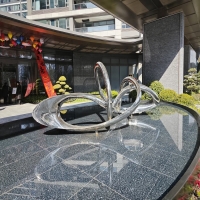Welcome to the website for landscape facilities products and knowledge.
What are the wind deflection strategies for lightweight, cantilevered table designs?
Lightweight, cantilevered table designs are popular for their sleek aesthetics and space-saving benefits, but they can be vulnerable to wind forces, especially in outdoor settings. To ensure structural stability, several wind deflection strategies can be employed.
1. Aerodynamic Shape Optimization: Streamlining the table’s profile reduces wind resistance. Rounded edges or tapered surfaces help deflect wind smoothly, minimizing lateral pressure.
2. Material Selection: Using lightweight yet rigid materials like aluminum or carbon fiber composites enhances strength while reducing susceptibility to wind uplift.
3. Anchoring Systems: Secure the base with weighted or fixed anchors. For portable designs, sandbags or water-filled bases can provide temporary stability.
4. Perforated or Slatted Surfaces: Incorporating perforations or gaps in the tabletop allows wind to pass through, reducing drag and preventing tipping.
5. Flexible Joints: Implementing shock-absorbing or pivoting joints at the cantilever connection can dissipate wind energy, preventing structural fatigue.
By integrating these strategies, designers can create wind-resistant cantilevered tables that combine elegance with durability, ideal for patios, balconies, or windy environments.
Related search:

Recommendation
Abstract art sculpture, stainless steel metal sculpture, large-scale water feature sculpture